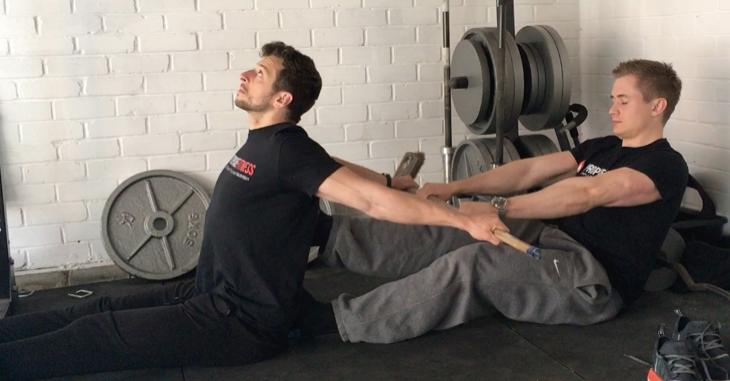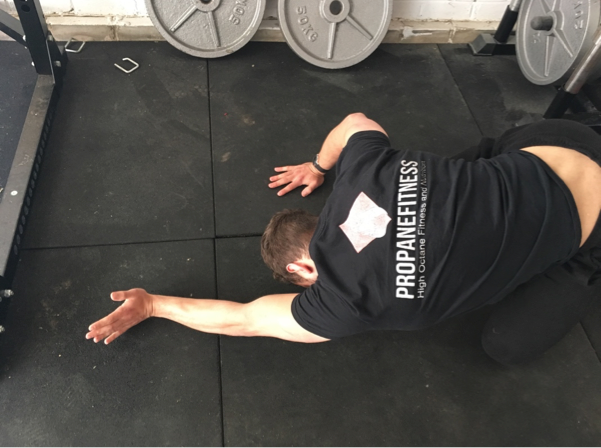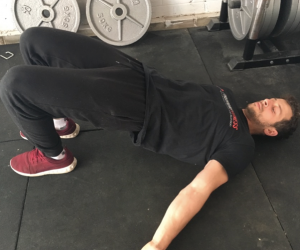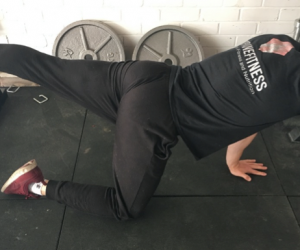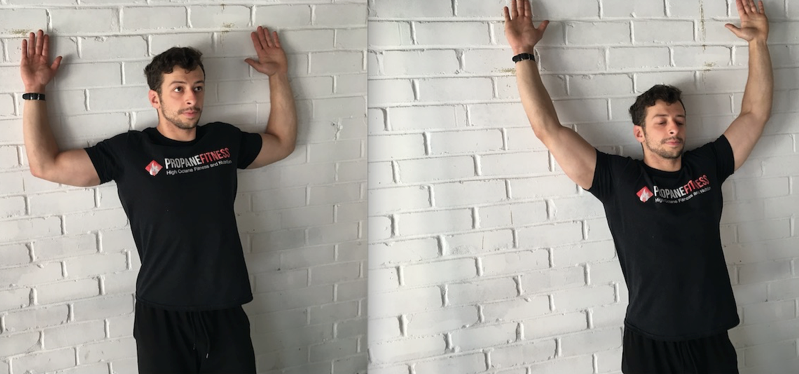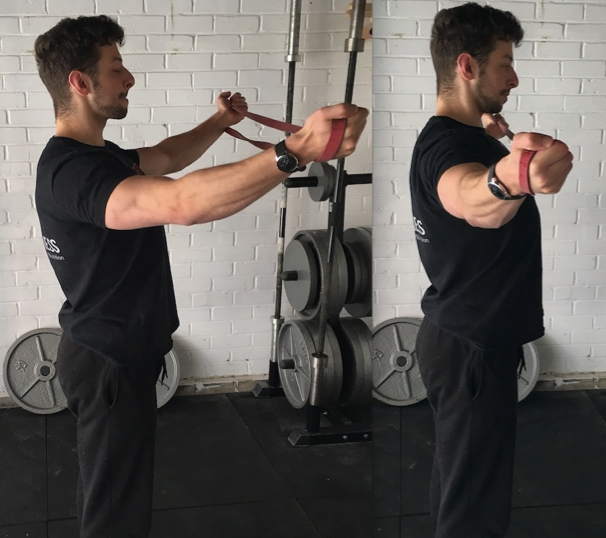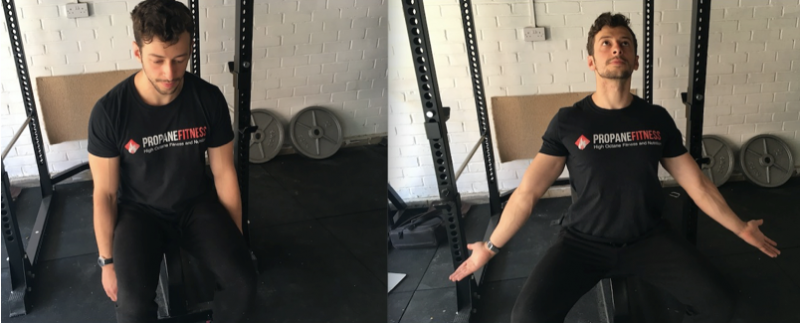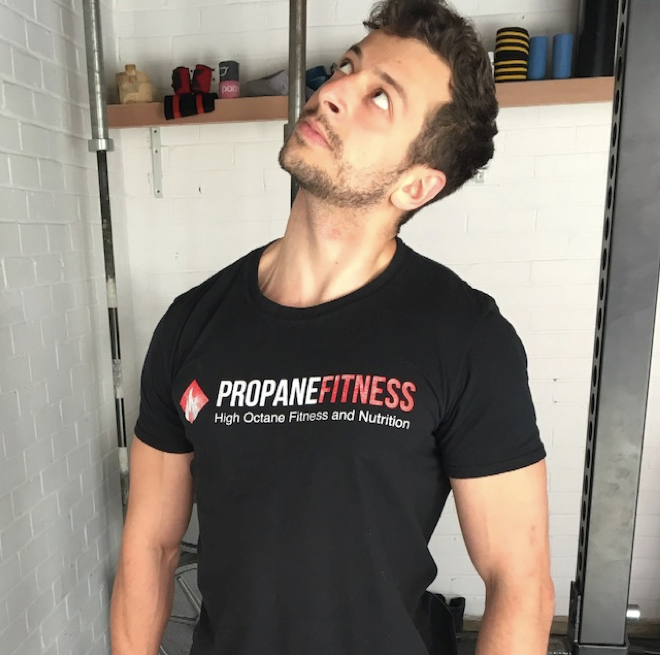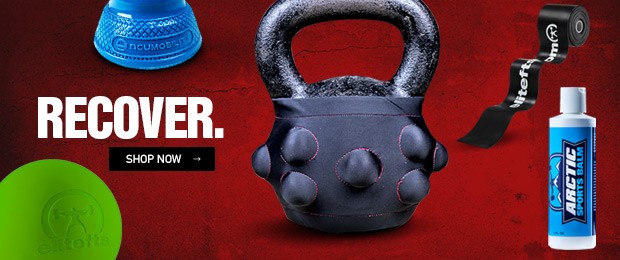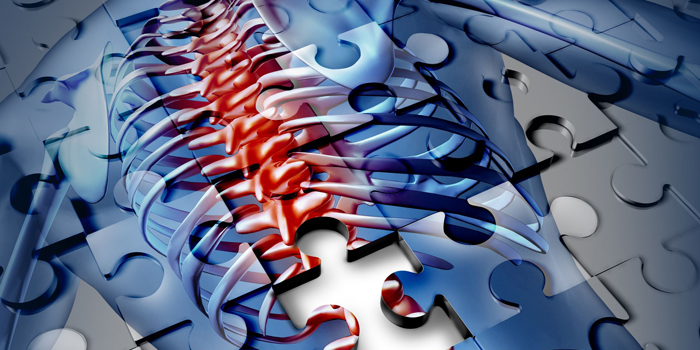
In my first article regarding posture, "Improving Your Posture for Sport Performance", I introduced a scientific definition of posture and discussed the parts of the body that determine your natural posture, namely the vertebral column which is comprised of the coccyx, sacral vertebra, lumbar vertebra, thoracic vertebra, and cervical vertebra. I also discussed the relevant muscles that affect posture and provided an in-depth look at why your posture matters for performance and health.
Now that we have a clear understanding of what posture is and why it is important, we can begin developing a plan to improve it. This article will cover the process you can go through to improve your posture. Included below are stretching protocols (with photo demonstrations), muscle activation methods, and action reminders for conscious repatterining.
How
Can you even change posture? First, we need to eliminate any obvious causes, such as excessive pressing to pulling ratio of volume in your training program, silly shoes, bad habits, poorly adjusted desk/chair, etc. Once the low hanging fruit is out of the way, we can look at correction.
Generally, poor results are observed from stretching and strengthening alone, without your conscious input to repattern the posture. Mechanisms are not clear-cut, but here's what I believe is happening:
- Through stretching, a new range of motion is created. If it is then frequently accessed, we remap the somatosensory cortex (our sense of what body positions are safely accessible) to integrate that as our new sense of our body's limits.
- Strengthening exercises, even non-specific ones, give the athlete confidence in the new positions, even if strengthening is not accompanied by an improvement in dysfunctional movement (improvements in pain can occur without improvement in dysfunctional mechanics [1,2,3,4])
- With the newfound confidence and expanded sense of what is a "safe" range of motion or position, the body can settle into that new position if we are willing to consciously develop it.
The relationship doesn't seem to hold as well for the transfer to functional/dynamic postures and require sport-specific training. So, (warning: prepare for your mind to be blown) to improve your technique, you need to practice your technique.
With that said, we sometimes structurally need fixing too. If your pecs are chronically tight/short, you're only going to be able to hold your shoulders back for about 30 seconds before your upper back is exhausted, no matter how strong your upper back is.
Are you really going to build your endurance from 30 seconds up to 24 hours?
"Correlational studies have failed to detect a significant association between muscle strength and scapular position but found a significant relationship between muscle length and scapular position. Prospective intervention studies have shown that stretching the anterior chest muscles on its own or in combination with strengthening the scapular retractors can alter the position of the scapula at rest in individuals with abducted scapulae."
"A review of the literature has found a lack of reliable, valid data collected in controlled settings to support the contention that exercise will correct existing postural deviations. Likewise, objective data to indicate that exercise will lead to postural deviations are lacking."
One of our clients Al asked the following:
"What are your thoughts on exercises and treatment for desk-worker kyphosis? Lately I’ve noticed neck pain pre-headache feeling when front squatting and split squatting as my upper thoracic and back fatigue, shoulders roll forward and thoracic spine curves forward, putting a lot of pressure on my thoracic spine and neck."
Case in point. Remember what I said above about lacking range of motion, causing a cascade of compensation down the kinetic chain in a movement?
Whether or not you use those proprietary fancy screening tools, the general principle is this:
- Pick the elements of your posture that you aim to fix.
- Determine the muscles that are tight and their antagonists.
- To trigger you to restore the pattern when you slip into old habits, identify: the new and desired pattern, a cue, and an action reminder
- Get to work stretching the tight muscles, strengthening the antagonists, and consciously accessing and inhabiting that new range. This is your new home.
Here are some ideas to play with below, but this doesn't need to be complicated. With a correct assessment and knowing a muscle's origin, insertion, and action, you can devise your own routine and tweak it by tuning in to what is tight on the day.
Tight Muscles
- Static Stretching: Explore and feel your limits, breathing into the space created, and consciously relax into and inhabit that space. Rather than angrily holding a stretch for time, it's much more effective to sit in the stretch for 21 breaths.
- Joint Mobilization
- Soft Tissue Work
- Dynamic Stretching
- Activation
- Strengthening
- Conscious Control: Action reminder
- Visualization
- Proprioceptive Feedback: Tape, paying someone to hit you with a stick, etc.
Antagonists
- Activation
- Strengthening
New Pattern
- Conscious control: action reminder
- Visualization
- Proprioceptive feedback
Worked Example: Hunchback
Assessment
- Take photographs from the front and side.
- Say you identify the most common postural defect in lifters, namely kyphosis and medial humeral rotation (i.e. hunched back and rounded shoulders). Often this is accompanied by lordosis; the spine is trying to maintain an S shape so you aren't falling forwards.
- Assess the major functional patterns in the sequence, such as wall slides, shoulder internal/external rotation, flexion, extension, etc. Stretching is both diagnostic and therapeutic.
- Based on our assessment, we identify pec minor, biceps, and lats to be tightest.
- Since the lordosis may be contributing (or sometimes even the cause), consider the hips, too: tight iliopsoas and lower back, weak or lazy glutes, and abs.
Stretch the Tight Muscles
Select a static stretch for each muscle group.
Biceps
- The Tabletop Stretch (or Variant)
Pecs
- The Partner Crossbow Stretch
- Door Stretch
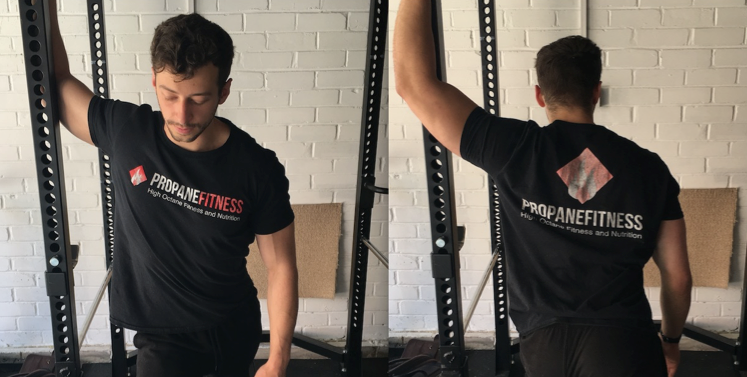
- Floor Pec Stretch
Lats
- Lats Stretch
Perform the stretches post-workout, twice per week, for 21 deep breaths. The more you can open and release into the stretch, the better. Floor positions are better where the limb is supported. This minimizes the apprehension reflex.
Include warm-up soft-tissue work and thoracic extensions on a foam roller. Lying on a foam roller long ways can also be effective to reverse some of the kyphotic patterns.
Activate and Strengthen the Weak Muscles
Abs and Glutes
- When Standing Around: Consciously engage when standing (you're not crushing a pineapple, just 10-20% to pull you out of a resting duck-butt and into lumbar neutral).
- Warm-ups: Perform bird dogs or glute bridge variations as part of your warm-up (keep your pelvis tucked in posterior tilt).
Rhomboids, Trapezius, Teres Minor
- Strengthen: Face Pulls
- Straight-Arm Scapular Depressions: These can be done on a pulldown machine or hanging from a bar
- Wall Slides: The goal is to keep your wrists and elbows in contact with the wall while maintaining lumbar neutral. As you can see, I’m horrendous in this position.
- Active Hangs
- Dip-Plus
- Band Pull-Aparts: Use an underhand grip and actively externally rotate at peak contraction.
- Superman Drill: Hold for one to two minutes, twice per day.
Conscious Repatterning: Action Reminders
Pick a tactile cue that works best for you. Be careful with the cue; don't just think "chest out." For example, if you're lacking range in your shoulders and thorax, this is going to come from your lumbar spine, causing you to simply drill more lordosis.
A better cue would be to imagine you're being suspended by your crown from a string. The Alexander technique is big on dynamic imagery with postural cues, such as "imagine the shoulders are spreading wide apart and the arms and hands falling like heavy rain." These cues cause you to stack the vertebrae and straighten out rather than pull a single structure out of line.
Tactile Cues
- Sellotape: A sellotape cross over the upper back is a classic Soviet-style reminder.
- Ring: A more subtle reminder is to wear a ring, watch, or a bracelet, and adopt your cue every time you notice it.
- Timer: If you sit in an office for most of the day, set a timer or use a specific sound (e.g. phones going off nearby) to perform Bruegger's maneuver (below) to break up the pattern of extended sitting.
So there's a worked example for kyphosis. Some other common mistakes and stretches to play with are as follows.
More Fun Stuff to Play With
Test-retest is an important principle with this stuff. Observe, feel, and photograph your posture before and after the following movements. Adopt what works.
- Text-Neck: We could perhaps call this Instagram-neck, Tinder-neck, Candy-crush-neck, etc. This is the perfect opportunity to use an action-reminder whenever you pick up your phone to "suspend from the crown."
- Shoulder Stretches
- Pec Stretches
- Thoracic Mobilization: Dr. John Rusin's thoracic mobilizations one and two for tight pecs. Perform 10-15 reps per side with deliberate form.
- Hip Flexor Stretch: Kit Laughlin’s partner hip flexor stretch
- Scalene Stretch: These are little muscles in your neck that attach to the top two ribs. They are supposed to be accessory breathing muscles, but when we're stressed and hunched over they can take over a function they're not designed for, making them tight and gnarly. Stretch them like this in a rack:
- Ming Chew-Inspired Trapezius Stretch
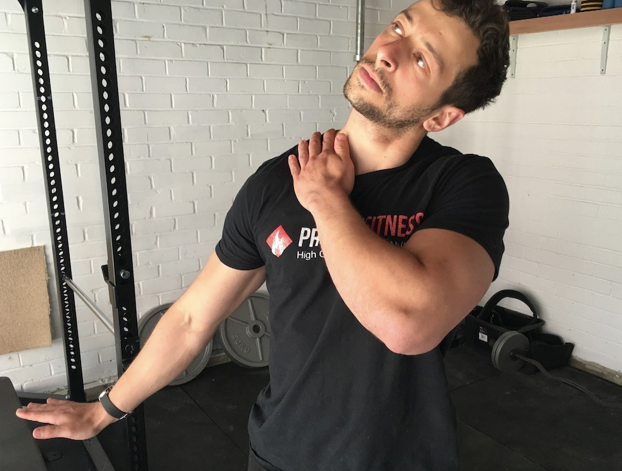
- Piriformis Stretch: Another hip muscle that can feel tight from sitting and squatting. Perform these twice per week for 21 breaths. Keep it simple and you're more likely to stick to it.
- No Unnecessary Tension: This is from Kit Laughlin. We're looking to develop the ideal positions with as little tension as needed, which can only be done once we have that ROM easily accessible to us.
What about systems like Pilates, Alexander technique, etc.?
The data suggests that Pilates reduces back pain — or wait, no it doesn't. What's likely happening here is that we all have different patterns, so applying the same approach to everybody is likely to have mixed success. Pilates is also primarily a strengthening protocol which, as we've seen, is only a third of the components in improving posture. That's like only having a protein target with zero attention to carbs or fat. You might get leaner. You might not.
Likewise, the Alexander technique is fantastic for cueing and repatterning, but we have to be able to access that new range first. We can attack posture on many fronts.
The tools of stretching, soft tissue work, strengthening, and cueing are all at our disposal, so why not use them? Finally, any modality is only as good as its teacher. To ensure the most success you'll need an individual assessment from a perceptive coach.
Conclusion
You now know the what, why, and how of posture, and now have an effective framework to start fixing yourself. Using the core principles above, explore the stretches, mobilizations, and cues for yourself. Develop some action reminders and a stretching schedule and get to work to unlock a taller, happier, and niggle-free you.
Header image courtesy of lightwise © 123RF.com









